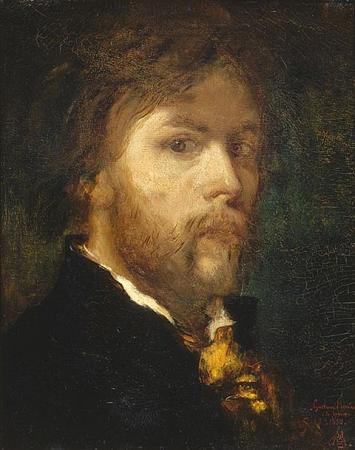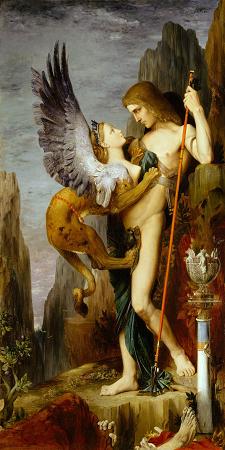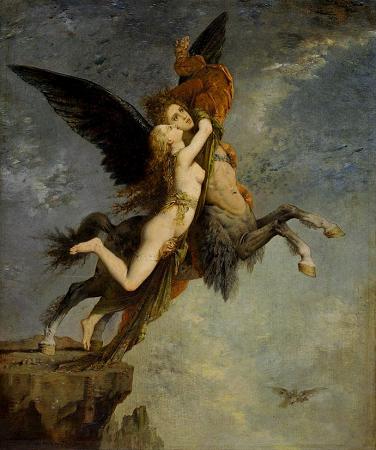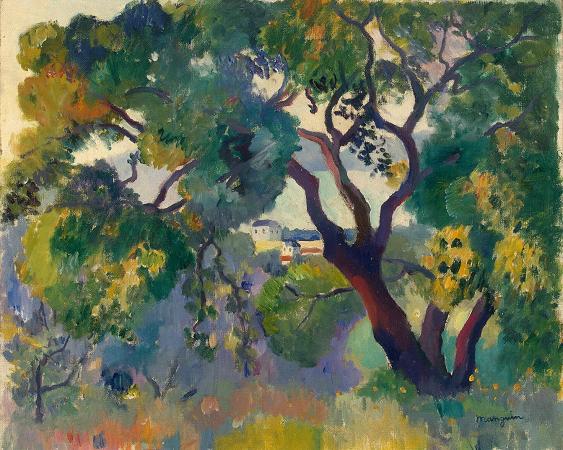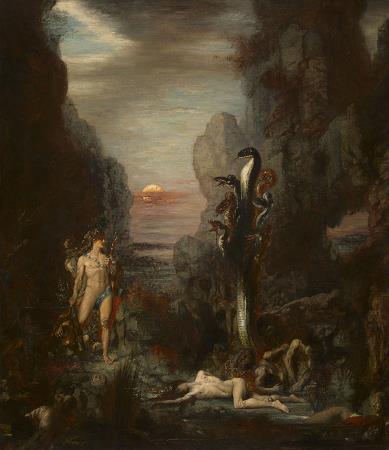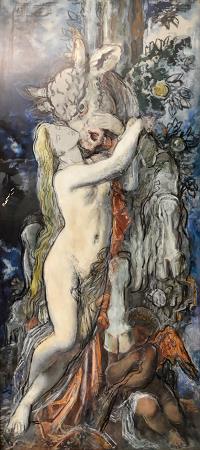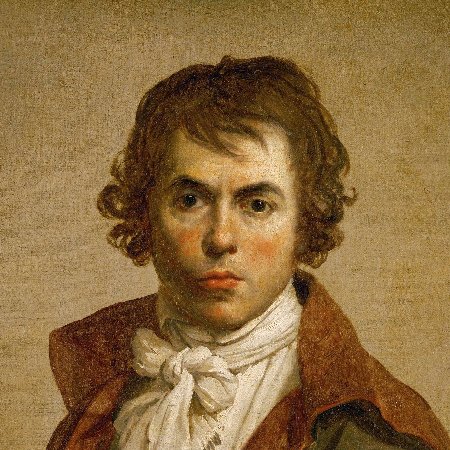Gustave Moreau (1826 - 1898). Gustave Moreau was a major figure in French Symbolist painting whose main emphasis was the illustration of biblical and mythological figures. As a painter, Moreau appealed to the imaginations of some Symbolist writers and artists. He is recognized for his works that are influenced by the Italian Renaissance and exoticism. His art work was preserved in Paris at the Musée Gustave Moreau. He was born in Paris, France, at 6 Rue des Saints-Peres. He came from a middle-class family. His father, Louis Jean Marie Moreau, was an architect for the city of Paris and his mother, née Adele Pauline Desmoutier, was a musician. Moreau lived a sheltered life growing up. Having visited Italy at age 15 he began his love for art. At age 18 he entered École des Beaux-Arts to study under the guidance of François-Édouard Picot and left in 1850. He then began to study art under his new mentor Théodore Chassériau, whose work strongly influenced his own. Moreau participated in the Salon for the first time in 1852. Moreau had a 25-year personal, possibly romantic relationship, with Adelaide-Alexandrine Dureux, a woman whom he drew several times. His first painting was a Pietà which is now located in the cathedral at Angoulême. He showed A Scene from the Song of Songs and The Death of Darius in the Salon of 1853. In 1853, he contributed Athenians with the Minotaur and Moses Putting Off his Sandals within Sight of the Promised Land to the Great Exhibition. Oedipus and the Sphinx, one of his first Symbolist paintings, was exhibited at the Salon of 1864. Moreau quickly gained a reputation for eccentricity. One commentator said Moreau's work was like a pastiche of Mantegna created by a German student who relaxes from his painting by reading Schopenhauer. The painting currently resides in the permanent collection at the New York Metropolitan Museum of Art. On 28 March 1890, Alexandrine Dureux died. Her death affected Moreau greatly, and his work after this point contained a more melancholic edge. She was buried at the same cemetery that Moreau himself would be buried. Moreau became a professor at Paris' École des Beaux-Arts in October 1891. Among his many students were fauvist painters Henri Matisse and Georges Rouault. Jules Flandrin, Theodor Pallady and Léon Printemps also studied with Moreau. Pierre Marcel-Béronneau was one of the most brilliant students of Moreau. Moreau died of stomach cancer and was buried at the Cimetière de Montmartre in Paris in his parent's tomb. He was made a Chevalier de la Legion d'honneur in 1875 and was promoted to an Officier de la Legion d'honneur in 1883. The death of Chasseriau in 1856 caused Moreau in his grief to stop painting and withdraw from public life. Concerned about his condition, Moreau's parents suggested he travel to Italy again. Living in Italy from 1857 to 1859 he found a new love for art. He gained inspiration from the artists of the Italian Renaissance, such as Leonardo da Vinci and Michelangelo. In 1864 Moreau won a medal at the Salon with his painting Oedipus and the Sphinx, the style of which revealed his close study of the work of Mantegna and Giovanni Bellini. Its firm outlines and detailed modeling are typical of the works that brought him success with critics and the public for the remainder of the decade. In the 1870s, disturbed by criticism that his work had become formulaic, he stopped exhibiting for a few years while he concentrated on renewing his art. In 1876 he completed Salome Dancing before Herod, which announced a more painterly style that would characterize his later works. Gustave Moreau's education in classical drawing did not stop him from experimenting with different styles of art. By traveling to other countries such as Italy or Holland and reading publications Moreau was able to develop his unique form of art. The most important publications Moreau owned were The Grammar of Ornament by Owen Jones, Le costume historique by August Racinet, and Le Costume by Frederick Hottenroth. All these influences led Moreau to draw not only humans, but animals and architectural monuments. Moreau started his career drawing classical art, but by incorporating exotic images he developed a mysterious and unique form of art. During his lifetime, Moreau produced more than 8,000 paintings, watercolors and drawings. His work influenced the next generation of Symbolists, particularly Odilon Redon and Jean Delville, a leading figure in Belgian Symbolism in the early part of the twentieth century. Many of Moreau's works are on display in Paris' Musée national Gustave Moreau at 14 rue de la Rochefoucauld. The museum is in his former workshop, and began operation in 1903. André Breton famously used to haunt the museum and regarded Moreau as a precursor of Surrealism.
more...




